Sustainable investing - The journey
ESG integration
The use of environmental, social and governance (ESG) factors has become a vital part of the investment process for most modern asset managers.
Robeco has integrated ESG into the investment decision-making process since 2010 and now routinely does so for its entire range of fundamental equity, fixed income, quantitative and bespoke sustainability products.

Importance of ESG integration
Financial materiality is the crucial ingredient in ESG integration. The factors being considered are not just ‘nice to have’ – they must also have a direct impact on the company’s bottom line. For example, an investor will not just look at factors such as pollution from the perspective of harming the environment. Such behavior may also have a financial impact, from attracting fines and raising costs, to regulatory risks. These factors feed through into a company’s results, and therefore into its market value.
The concept of double materiality is also important, particularly regarding a company’s climate change risk. Investors must look at what effect the company has on the world as well as what effect the world is having on the company.
ESG integration is widely seen as contributing to the ability to make the kinds of investment decisions that can identify the more sustainable companies and avoid the losers.
What is ESG integration?
ESG integration is defined by the UN Principles for Responsible Investment as: “The explicit and systematic inclusion of environmental, social and governance issues in investment analysis and investment decisions.”
Robeco usually integrates ESG in three steps:
The first is to identify and focus on the most financially material issues affecting the company.
Then the investor can analyze the likely impact of these factors on the company’s business model.
Finally, this information can be incorporated into the valuation analysis to form a fundamental view.
This ESG analysis forms part of a wider mix of traditional metrics to value the company and its prospects. ESG investing is not the same thing, however, as impact investing. With ESG investing, the purpose is to integrate environmental, social and governance factors into the process, and then decide whether the stock or bond is worth buying. With impact investing, the purpose is to make an impact on the ground with the investment while also getting a financial return. This makes many companies unsuitable for impact strategies even if their ESG credentials are good.
ESG research as the bedrock
Core frameworks
Robeco uses the value driver-based ESG scoring approach to find the most sustainable companies in equities. This links ESG factors such as a company’s emissions, waste, labor relations and capital returns to value drivers through their expected effects on business models and competitive positions. The starting point of this linking process is having a clear understanding of the nature of the business, which should allow the analyst to identify the most material issues.
Step 1
Identify and focus on most material issues
Step 2
Analyze the impact of material factors on the business model
Step 3
Incorporate into valuation analysis and/or fundamental view
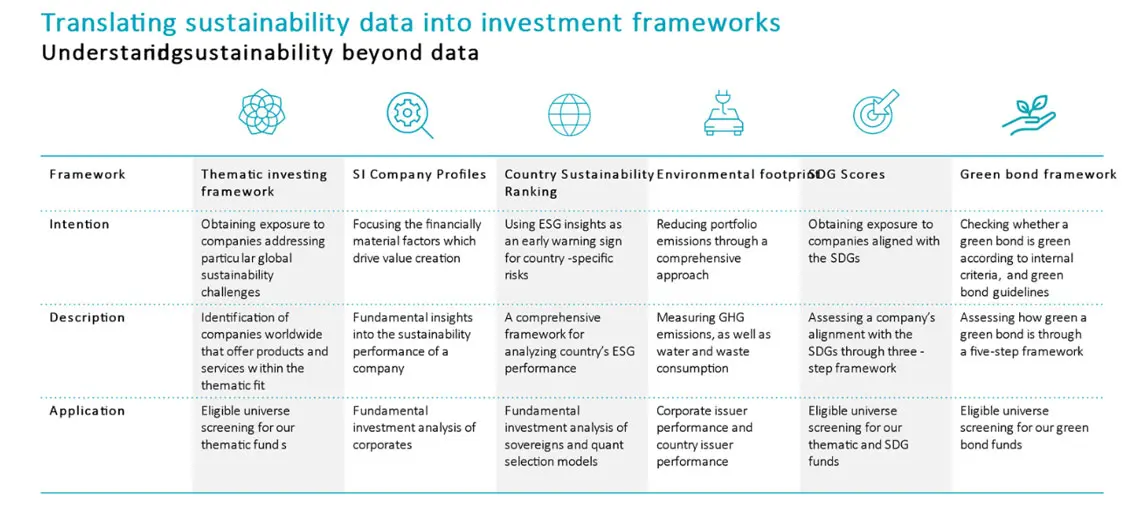
In fixed income, the ESG integration process uses the F-score framework, which analyses a company’s business position, corporate strategy, ESG profile, corporate structure and financial profile. Standard ESC scoring used for equities can help compile the ESG profile, particularly when a company issues bonds as well as stocks.
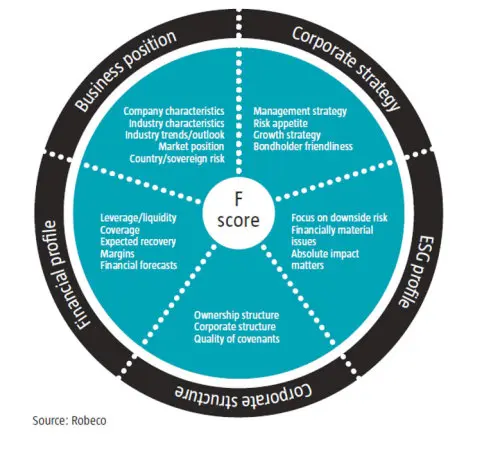
For strategies that follow the Sustainable Development Goals, we developed an SDG Framework to score companies that can contribute to them based on three issues.
For government bonds, the Country Sustainability Ranking is used to evaluate the ESG characteristics of 150 countries. This also feeds though into equities and corporate bond research, since many companies operate in more than one country, and will always be subject to the investment conditions in their domicile.
And then more specific tools can be used across all asset classes, such as our Carbon Analysis Tool which provide insight into a portfolio’s and the underlying company’s greenhouse gas emissions. Via the tool the investment teams can slice and dice emission on amongst other scopes or sector contribution. This is becoming increasingly important in trying to meet net zero targets.
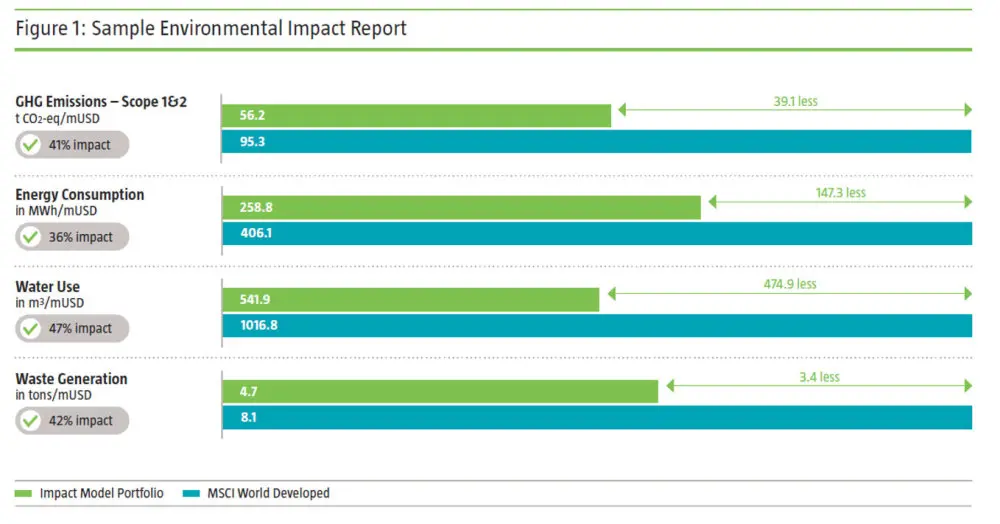
The importance of performance
We carry out ESG integration because we believe that sustainability is a driver of structural change in countries, companies, and markets, and that companies with sustainable business practices are more successful. For example, analysis of the returns of the Sustainable Global Equities strategy from 2018-2021 was able to isolate the part that came from the sustainability analysis.
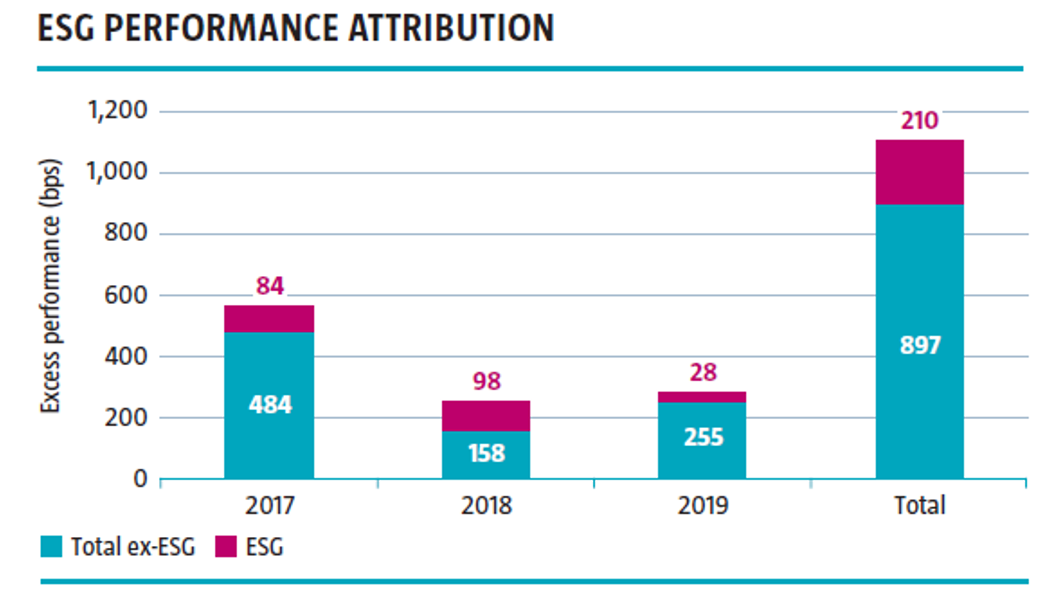
It was also possible to show performance accruing from exclusions:
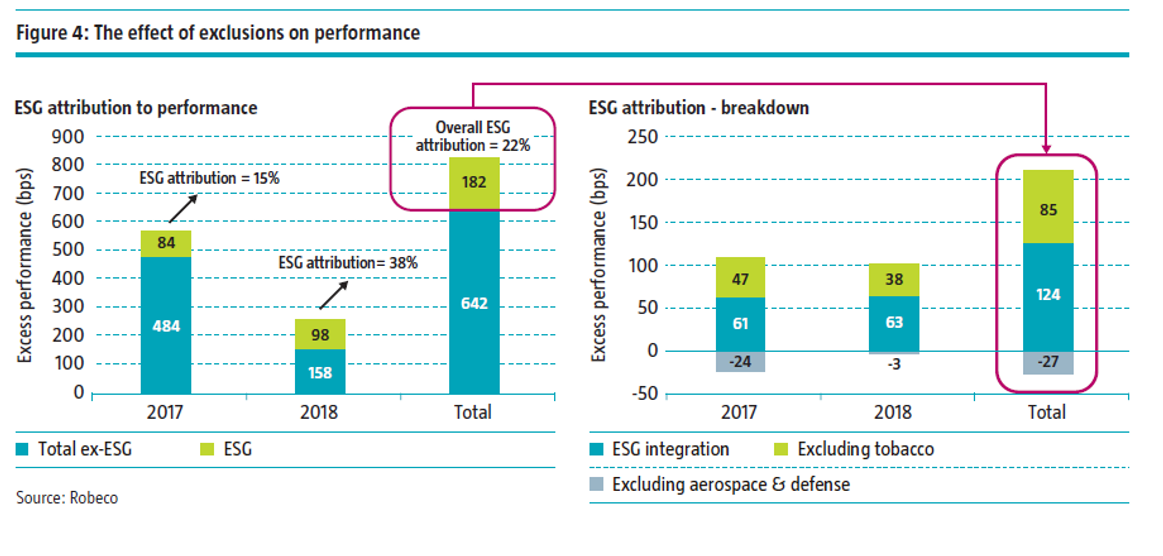
This accrues from the valuation process in which the potential returns (or drawbacks) from ESG are factored in to the eventual target share prices for the companies purchased for the portfolio. This allows its managers to isolate the part of outperformance that came directly from the ESG analysis rather than other factors.
A better pay-off
The ability of more sustainable companies to better weather exogenous shocks was seen during the Covid crisis, where companies with sustainable business models actually did better than companies that do not take ESG into account.
Another example of how focusing on sustainability pays off in the long term can be seen in strategies that align with the SDGs. Robeco’s SDG Framework is used to identify those companies that can make a net positive contribution to one or more of the goals.
Superior carbon footprints
And performance can be measured in other ways, such as in having a portfolio which has a 20% lower carbon footprint than the benchmark. Several sustainability strategies invest in companies that are on a climate trajectory to align with the goals of the Paris Agreement, which requires their carbon footprint to be lowered by an average of 7% per year.